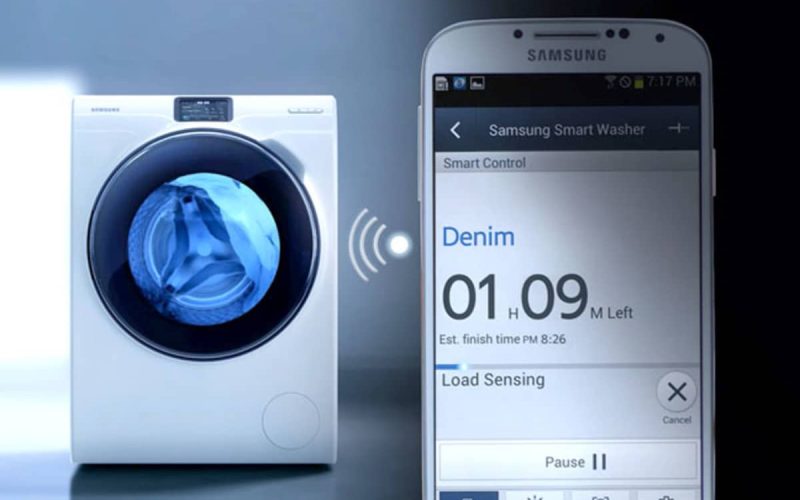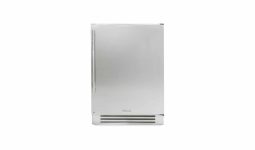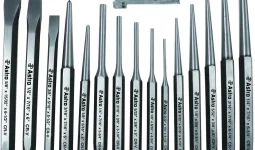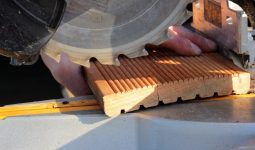We are in an age where simple devices like smart washing machines now occupy special spots in homes worldwide.
In this era of continuous, almost revolutionary advancements in digital technology, new inventions and innovations have replaced the obsolete models of various appliances.
Appliances go out of vogue faster than you can say, Jack, because of the influx of new superior-tech supplanting them in the market and functionality.
One of these appliances is the washing machine. Smart washing machines are simply laundry appliances capable of connecting to the internet or wireless.
An app installed on your phone allows you to operate it remotely, making it more convenient than earlier models of laundry machines.
It doesn’t matter if you’re indoors or outdoors; the app and network connectivity via WiFi are all you need to operate your laundry machines.
Smart washers have an auto-dosing function, automatically measuring your detergent/fabric softener for a specific laundry cycle.
All you must do is put your detergent or fabric softener in bulk. The machine will ration it per cycle for you.
Certain factors, such as the weight of a load of laundry, soiling level, and type of clothes, determine how much the machine rations per cycle.
You are good to go once you install the manufacturer’s app and register according to the instructions on display.
You can be miles away from home and still control your laundry appliance in the house. You only need to be connected to the internet.
Features and Advantages of Smart Washing Machines
- Convenience: You can easily control your laundry operations using your tablet or phone app from any location. With the app, users can start/ pause/ recommence their cycles, choose a specific cycle, check how much time is left, and get notifications when the cycle is finished.
- Auto-dosing: It will help you lose your detergents and other laundry cleaning substances, provided you fill the auto-dispenser with enough quantity to last a long while.
- Capacity: Washing machines have varying laundry capacity depending on the size. The bigger the appliance, the larger its laundry capacity. Industrial and domestic appliances can’t have the same capacity due to differences in size and tub. Some domestic machines can wash up to 12kg; others can wash less, others more.
- High tech: The smart washers have advanced features such as voice control compatibility and eco bubble tech (can generate lather from detergent using water and air) before the laundry cycles create bubbles that will clean the fabrics. This tech makes fabric penetration easier and more effective on the water with low temperatures.
- Self-diagnostic: These smart washers are smart indeed. They are built to identify any issue or fault. Notifications of an error will be sent to you via the app. These notifications may include blocked filters, clogged hoses, and many more. Early detection of such issues will help you quickly rectify or troubleshoot these issues on your own with the aid of the manual. This will save the cost of outsourcing an engineer or repair technician. However, there are some issues that you better leave for the repair technician.
- Minimal noise and vibration: These smart washers operate efficiently and quietly. They don’t generate noises or vibrate in a way that destabilizes the relaxing mood of the household. You can sleep through your laundry cycles.
- Safety measures: Prevents the cycle from starting if the door is open or the machine isn’t connected to the water supply.
The smart washing machine is a good choice for any household, especially for those who barely have time to hang around, which sometimes affects their laundry.
So, the smart washer solves this problem because you can run your laundry cycles even while on the move.
You can easily monitor the cycle’s progress, and the app will inform you when your laundry is about to be unloaded after it has completed its cycle. They are also energy-efficient.
They don’t use more energy and water than necessary. So it is advisable to go for this if you love convenience.
Are Smart Washing Machines Worth Purchasing?
When smart washers became available a few years ago, manufacturing companies had a hard time selling their benefits to would-be buyers.
The price didn’t help matters, either, because new tech usually comes with a higher price tag than existing tech.
Today, you might purchase an affordable smart washing machine for slightly more than a regular machine of similar build and quality.
This is still a good deal because you are not just buying a helping hand in the house; you are also buying convenience.
Before you decide to buy a smart machine, consider factors such as convenience, lifestyle, your love for smart technology, stress-free operational control, and more.
Smart Washing Machine User Guide
Safety Tips
- Before the installation process, inspect the body of the washer for damages. If you observe or see anything, do not proceed with the installation.
- Do not store or install the washer where it will have unfettered access to the weather.
- The controls on the appliance dashboard are not to be tampered with. Do not touch anything if you don’t know what you are doing. Kindly refer to the manual for guidance.
- Don’t repair or replace any part of the washer. Also, do not attempt any servicing unless specifically advised in the user-maintenance manual or published user-repair instructions that you understand and have the skills to carry out.
- Keep the area around your appliance spotless and free of combustible items such as rags, lint, chemicals, or paper.
- Do not let your kids or any disabled person go near the machine unsupervised.
- Do not let your kids play on the body or within the appliance’s interior.
- Keep your pets and other small animals far from this appliance
- Make sure the door of the device is firmly closed always
- Do not put your hand into the washer while the tub is still in motion. Please wait for it to stop moving completely
- Avoid laundering clothing articles that have come in contact via (washing, cleaning, soaking, or spotting) with combustible or flammable substances such as kerosene, petrol, certain solvents, wax, paint, degreasers, and oil.
- Close the appliance door gently. Ensure not to slam it
- Don’t try to force the door open. Open gently or wait till it’s automatically unlocked before opening
- During drying or very high-temperature wash cycles, the front door will likely get very hot; do not touch the door during these cycles.
- To prevent the risk of electric shock, remove the appliance’s plug from the socket before you proceed with maintenance or cleaning exercises on the appliance
- Grab the plug’s head while unplugging the appliance from the wall socket or power source. Do not pull or jerk it from the cord to avoid damaging the plug.
- Avoid operating the appliance if it has a damaged cord or plug, broken body parts, or parts that are missing or partly disassembled.
- Destroy the plug of an old machine you intend to discard. Also, ensure you cut off the plug directly behind the appliance.
- To reduce the risk of injury or harm to self, follow all the recommended safety measures
Installation Tips
- For proper installation, ensure you install the appliance with the aid of a qualified technician.
- Do not use an extension or adapter as the appliance’s power source. Connect the appliance directly to the wall socket.
- If the supply cord is faulty, ensure you contact the company’s repair technicians or a suitably qualified technician outside the company to fix it. Do not attempt self-repair
- Ensure that after each appliance use, you remove the plug and turn off the water supply.
- Ensure the appliance is well-positioned so the plug can be easily accessible.
- Don’t install the appliance in areas with freezing temperatures. This is to avoid frozen hoses, which tend to burst open under pressure and to prevent impairment or damage to the appliance’s electronic switchboard.
- Position the appliance on an even, hard, horizontal surface
- Make sure the floor on which the appliance is placed is bare and not covered by rugs or carpet
- Make sure the floor is even. Do not attempt to balance the appliance on uneven floors with piles or bundles of sticks, tires, or something similar
- Do not install the appliance in a place where the temperature is likely to get high, i.e., close to a gas cooker or stove
- With the appliance installed, adjust all four bases using the transit bolt spanner provided, ensuring the smart washing machine is stable, and an allowance of approximately 20mm is left between the top of the machine and the underside of any work-top
- This equipment is not designed for use underwater, on a ship, or aircraft. It should be installed in a stable location, not a mobile one.
- It is also not intended for outdoor use
- Do not use the appliance to launder things such as mats and footwear
Safety Tips for the Power Cord
- Ensure the power cord is periodically checked and inspected for any damages or disfigurations. If seen, discontinue the use of the appliance till the issue is rectified.
- Do not overload that particular wall socket your smart washing machine is connected to
- Check to ensure the wall socket is not faulty or damaged. Be sure it is in good condition before use.
- Replace frayed or damaged power cords with the exact part from an authorized service center.
- Avoid stepping on, closing the door on, or disfiguring the cord
- Ensure the plug doesn’t come in contact with moisture
Maintenance Tips
- Ensure that parts of the appliance, such as the dispenser drawer, drain pump filter, water inlet filter, hose, and so on, are periodically inspected and cleaned according to the manual’s instructions.
- Periodically wash the tub of the machine. Most appliances have a self-clean function for their tubs.
- Ensure you clean the appliance’s exterior as well once a week or so. Disconnect the plug and use a damp, clean cloth to wipe the body free from dust.
Troubleshooting Tips
Excessive Vibration, Noise, Rattling, or Clanking Inside Smart Washing Machines
- Metallic objects, such as coins or pins in the washing drum, cause rattling or clanking noises.
- Excessive vibration and noise automatically happen when the laundry load is very heavy.
- The transit bolts would not have been removed during the installation if the load hadn’t been there.
- Another reason could be that the appliance was well-balanced or positioned on the floor.
- To tackle this, pause the wash cycle and remove all metallic objects to stop that clanking noise.
- If your laundry is very heavy, you might want to lighten it or rearrange it so the appliance can launder it efficiently and reduce the noise and vibration.
- Ensure all transit bolts are removed and stored somewhere safe because you might need it later.
Water Trouble
- If you notice water leaks, check the hoses and drain hoses; they could be loose at the point of contact with the appliance or the tap.
- Water leaks are also triggered by too much lather caused by using too much detergent for a wash cycle.
- If you notice water not draining or draining slower than usual, it means the drain hose is clogged, or the drain filter is clogged and needs to be cleaned.
- If you notice that water is not flowing or flowing in quantity, it’s either the tap is locked or partly on or the water supply in that environment is not adequate. It could also mean the water supply pipe is blocked or the inlet hose taking water into the washing drum is clogged with dirt.
- To tackle water leaks, ensure you tighten the hose or pipe at both ends and the tap or the washer. Contact a technician if you can’t do it yourself.
- For slow or no drainage, unclog the drain pipe or hose and then check the drain filter as well.
- Avoid using too much detergent or some detergents that generate too much lather while washing.
- To tackle the water supply issues, check the tap to ensure it is completely on. If no water is still coming out, check for another tap in the house to connect to your washer. Also, check your inlet filter and clean it if it’s clogged with dirt
Washer Issues
- If the appliance doesn’t start, then you should check your electrical connection. It could mean that the cord is loose, the circuit breaker has tripped, the fuse in the house has blown, or perhaps the power supply has been interrupted.
- If the washer is not spinning, the cause could be the water tap not being on or the appliance door not being shut well.
- To solve the issue of the washer not starting, check the plug or electrical connection. Fit the plug properly and switch on the wall socket.
- If it’s the circuit breaker, have it reset or been replaced? If it’s the fuse, make sure you replace the fuse and make sure the electrical load does not exceed the capacity of the fuse. Ensure a qualified technician does this.
- For the spinning, ensure the water tap is on completely
- Check to make sure the door is firmly closed, then start the wash cycle and wait for a short while before the drum begins to spin
- The door must be locked; otherwise, the drum won’t spin
- Also, check the laundry load to make sure it is arranged well and balanced
Every user of the smart washer should strictly adhere to the instructions and guidelines written by the manufacturers to keep the machine in stable and optimum working condition.








